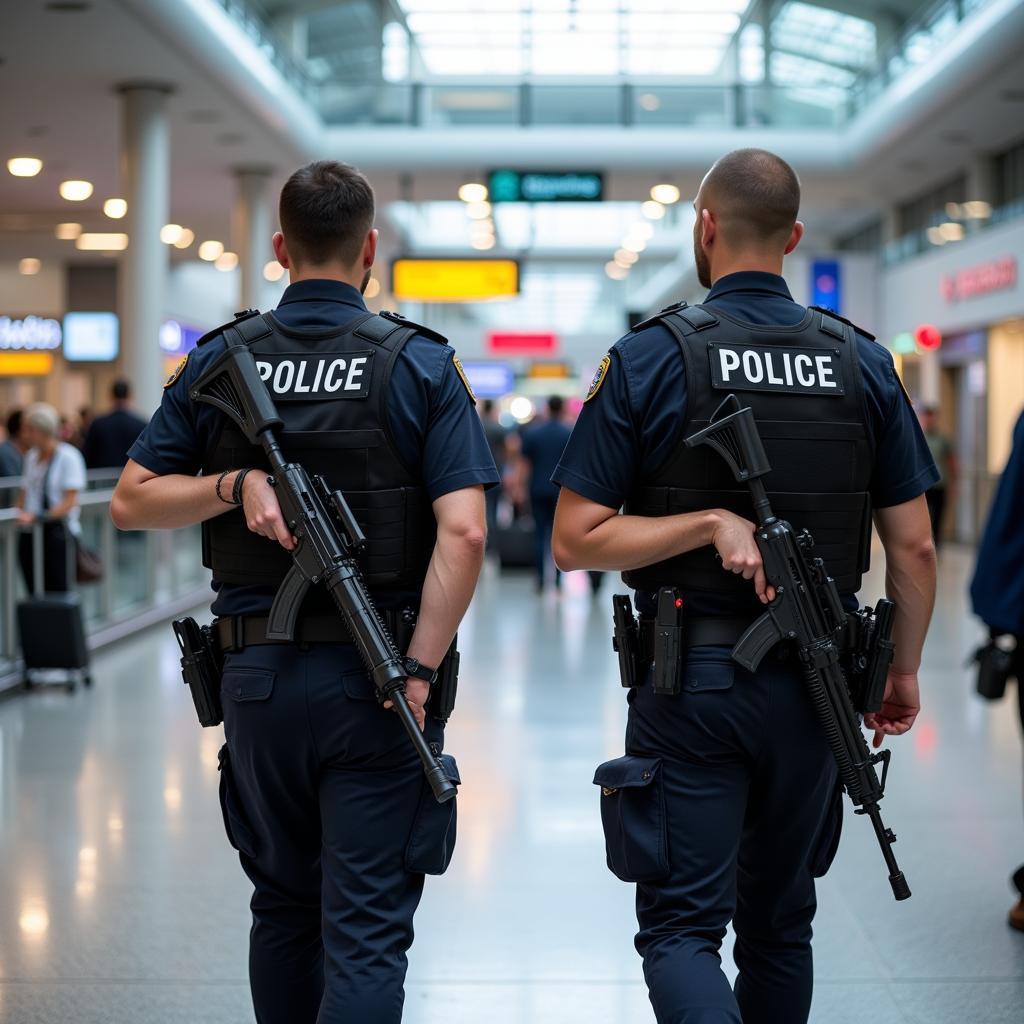The 2007 Glasgow Airport Attack was a terrorist incident that shocked the world. On June 30, 2007, a Jeep Cherokee loaded with propane canisters was driven into the glass doors of the main terminal of Glasgow Airport, Scotland. This act of terrorism, though ultimately unsuccessful in causing mass casualties, left a lasting impact on airport security and counter-terrorism strategies worldwide.
Understanding the 2007 Glasgow Airport Incident
The attack was planned and executed by Bilal Abdullah and Kafeel Ahmed, two individuals motivated by extremist ideology. Their objective was to detonate the vehicle within the crowded terminal, causing significant destruction and loss of life. However, the vehicle’s improvised explosive devices failed to detonate properly, limiting the physical damage. Ahmed, who drove the vehicle, suffered severe burns and later died from his injuries, while Abdullah was apprehended and subsequently convicted of conspiracy to murder.
The 2007 Glasgow Airport attack came just one day after the attempted car bombings in London, highlighting the growing threat of homegrown terrorism at the time. While the London attacks were unsuccessful, the Glasgow incident demonstrated the determination and willingness of individuals to target civilian infrastructure. This event brought the issue of airport security sharply into focus.
 Glasgow Airport Attack: Jeep Cherokee Rams into Terminal Entrance
Glasgow Airport Attack: Jeep Cherokee Rams into Terminal Entrance
The Aftermath and Enhanced Security Measures
Following the 2007 Glasgow attack, airport security protocols underwent a significant overhaul. The incident exposed vulnerabilities in existing security measures, prompting a review and implementation of stricter procedures. Increased surveillance, enhanced vehicle screening, and greater public awareness became integral parts of the new security landscape.
One of the most notable changes was the introduction of restrictions on vehicle access to terminal buildings. Many airports implemented barriers and checkpoints to prevent vehicles from approaching too close to the terminals. This measure aimed to create a buffer zone and minimize the potential impact of vehicle-borne attacks. The attack also emphasized the importance of training airport staff and first responders to handle such situations effectively.
What Were the Motives Behind the 2007 Glasgow Attack?
The motives behind the 2007 Glasgow airport attack were linked to extremist beliefs and a desire to retaliate against perceived injustices. The perpetrators saw the attack as a means to express their grievances and instill fear. The investigation revealed connections to international terrorist networks, highlighting the complex and interconnected nature of such threats.
Understanding the motivations behind such acts is crucial for developing effective counter-terrorism strategies. It requires a nuanced approach that addresses the root causes of extremism and promotes inclusivity and understanding. This involves not only security measures but also social and educational initiatives aimed at countering radicalization.
 Increased Airport Security Presence: Armed Police Patrol
Increased Airport Security Presence: Armed Police Patrol
Glasgow Airport Today and Continued Vigilance
Today, Glasgow Airport operates with enhanced security measures in place, a testament to the lessons learned from the 2007 attack. The event served as a stark reminder of the importance of constant vigilance and adaptation in the face of evolving security threats. Similar to the abha airport attack news, the Glasgow incident underscored the vulnerability of civilian targets.
The 2007 Glasgow Airport attack remains a significant event in the history of aviation security. It prompted a paradigm shift in how airports approach security, impacting everything from passenger screening to terminal design. The incident continues to inform security protocols and strategies globally, serving as a reminder of the ongoing need for vigilance and preparedness.
Conclusion: Remembering and Learning from 2007
The 2007 Glasgow Airport attack, though unsuccessful in its ultimate objective, served as a wake-up call for airport security worldwide. The incident highlighted vulnerabilities and prompted a significant overhaul of security protocols. From enhanced screening procedures to increased vigilance, the legacy of the 2007 attack continues to shape airport security today.
FAQ
-
What happened at Glasgow Airport in 2007? A Jeep Cherokee loaded with explosives was driven into the main terminal.
-
Were there any fatalities in the 2007 Glasgow attack? Only the driver of the vehicle died from injuries sustained in the attack.
-
How did the 2007 Glasgow attack change airport security? It led to enhanced security measures, including increased vehicle screening and restricted access to terminals.
-
What were the motives behind the attack? Extremist ideology and a desire to cause harm and instill fear.
-
Is Glasgow Airport safe today? Yes, Glasgow Airport has significantly enhanced its security protocols since the 2007 attack.
-
What can I do to stay safe at airports? Be aware of your surroundings, report any suspicious activity, and cooperate with security personnel.
-
Where can I find more information about airport security measures? You can consult official government websites and airport websites for detailed information.
Need further assistance? Please contact us: Phone: +13089626264, Email: [email protected] or visit our office at 404 Bothwell St, Oxford, NE 68967, USA. We have a 24/7 customer service team.

